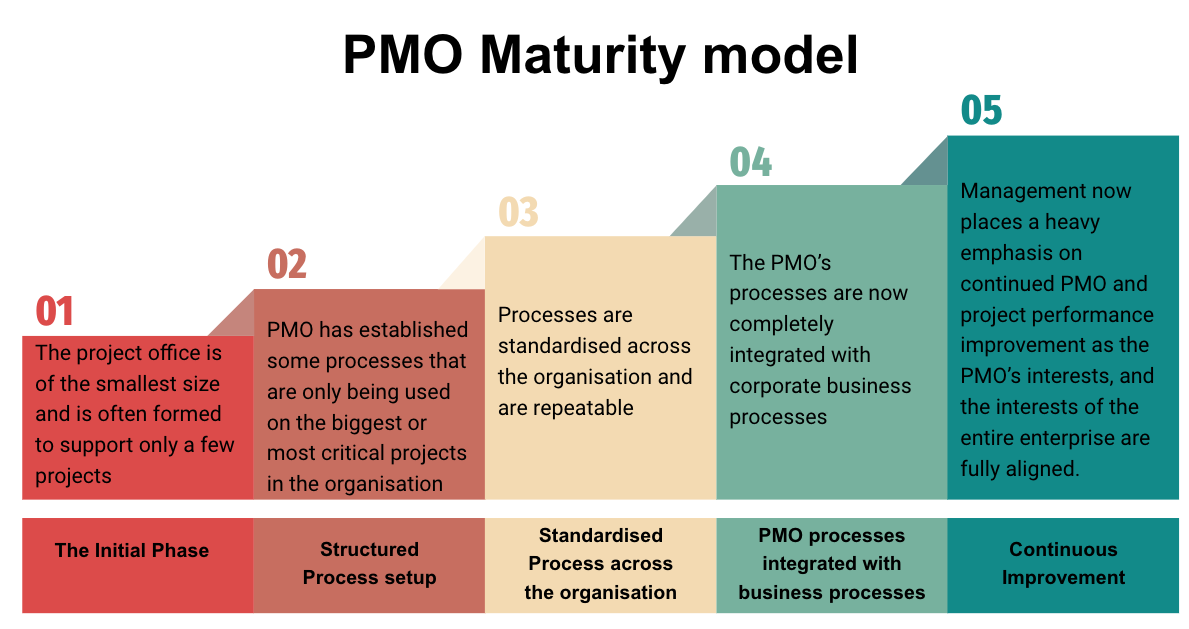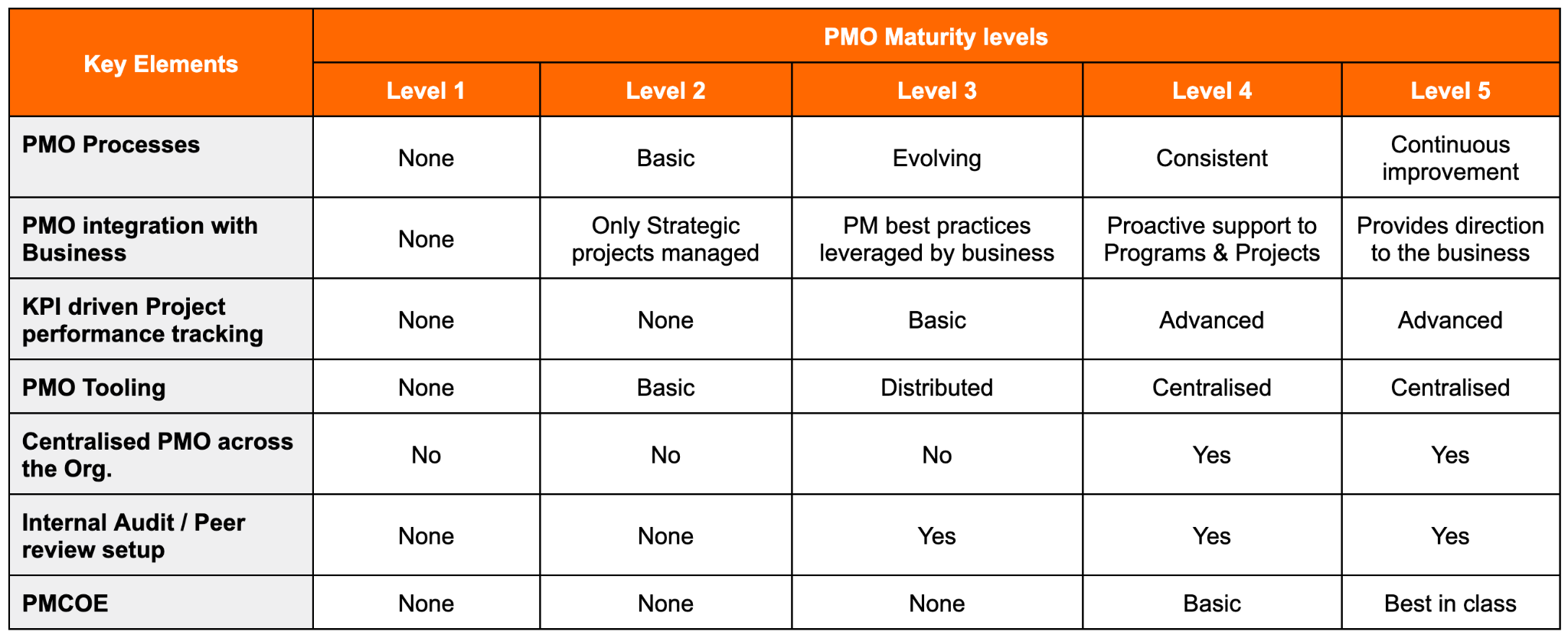Maturing a Project Management Office
Maturing a Project Management Office (PMO) is the process of moving the PMO through different stages - from a focus on operational efficiency to a focus on strategic alignment.
What is the PMO Maturity model?
A PMO maturity model is a mechanism for recording and tracking the growth of a PMO through its different levels of maturity. It serves as a roadmap of progress of the organisation. This maturing process results in more projects complying with Project Management standards, closing projects successfully and achieving business objectives. There are many PMO maturity models that currently exist eg. PMI, CMM, OPM3, Gartner, Berkeley, Kerzner and others, this article does not talk about any specific PMO maturity model.
Why is it important?
As the PMO matures it delivers more value to the corporation by delivering more value with fewer resources. Knowing where the PMO lies in the maturity model helps leaders to assess the state of the organisation, enabling the organisation to identify areas of improvement, and establish a roadmap to mature the organisation.
Stages of the PMO Maturity model
Let's take a look at the various stages a PMO goes through as it matures from its infancy to a fully-operational project management office. Across all the various maturity models that exist, there are typically five stages of a PMO Maturity model, starting from Level 1 and maturing to Level 5.

Level 1 - The Initial Phase
This is the most basic level. The project office is of the smallest size and is often formed to support only a few projects. The existence of a project office means management has given its authorization to begin developing policies, but may still be dubious about their utility. Multiple project offices can exist in a single organisation.
Level 2 - Structured Process setup
At Level 2, the PMO has established some processes that are only being used on the biggest or most critical projects in the organisation. Management is now more on board and is encouraging the use of the PMO. The PMO is beginning to involve itself in planning and scheduling. Reporting is high-level, inconsistent, and manually consolidated. Project performance KPIs are still not tracked or reported.
Level 3 - Standardised process across the organisation
At Level 3, Although it continues to address project management oversight and control, the level 3 PMO introduces a new focus on support that optimises individual and project performance in the project management environment. It's also beginning to offer guidance on general resource allocation, following its own established processes. Processes are standardised across the organisation and are repeatable. Reporting is much more detailed, and project plans, estimates, and scheduling are based on industry standards, as well as best practices, lessons learned and historical data. The PMO is focused on the organisation, and work is underway to analyse project performance using KPIs. The PMO now uses industry standard Project Management tools to plan and track projects, but might still lack a centralised Project Management tool. Typically some form of internal Project auditing mechanism is put in place to ensure consistent project delivery practices are adhered to.
Level 4 - PMO processes integrated with business processes
The PMO's processes are now completely integrated with corporate business processes. The cross-pollination between project and business processes flows the other direction as well. Now, much of the PMO's reporting and performance tracking is gauged against business results as much as it is against project results, and the criteria for project success have evolved to be far more holistic. There is a company-wide centralised Project Management tool and is the single source of truth for project planning, tracking and reporting. Due to the complete integration of the PMO within the business processes, cross functional collaboration is seamless and hence large and complex projects are delivered faster to achieve strategic objectives quicker. From my experience, this is the most difficult level to achieve.
Level 5 - Continuous Improvement - PMCOE setup
Management now places a heavy emphasis on continued PMO and project performance improvement as the PMO's interests, and the interests of the entire enterprise are fully aligned. The PMO now has full processes in place to measure project efficacy and efficiency. On top of these processes, there are processes to ensure that project performance continues to improve, instead of remaining constant a PMCOE (Project Management Center of Excellence) is set up. The PMCOE is heavily focused on continuous improvement of the PMO and the projects the office manages.
Summary of PMO Maturity levels
Here below I have tried to summarise the key elements across the five PMO maturity levels, giving a quick overview. It is possible that some characteristics of a PMO are shared between levels so it may be possible that a PMO is between levels. (eg. Level 1.5, 2.5, 3.5 or 4.5). Moreover it should also be noted that a PMO maturity level can degrade over time, if it is not able to maintain its standards.

Please note that a PMO can have different elements at each level of the PMO. The table above is neither an exhaustive list nor an industry standard, but only an interpretation of the PMO levels based upon the various PMO maturity models established.
Reference credits and further reading:
If you are interested to read more about the PMO maturity levels I recommend the below articles:
Gerard M. Hill's PMO A competency continuum published (2004)
Pinto, A., Cota, M., & Levin, G. (2010). The PMO maturity cube, a project management office maturity model. Paper presented at PMI® Research Conference: Defining the Future of Project Management, Washington, DC. Newtown Square, PA: Project Management Institute



